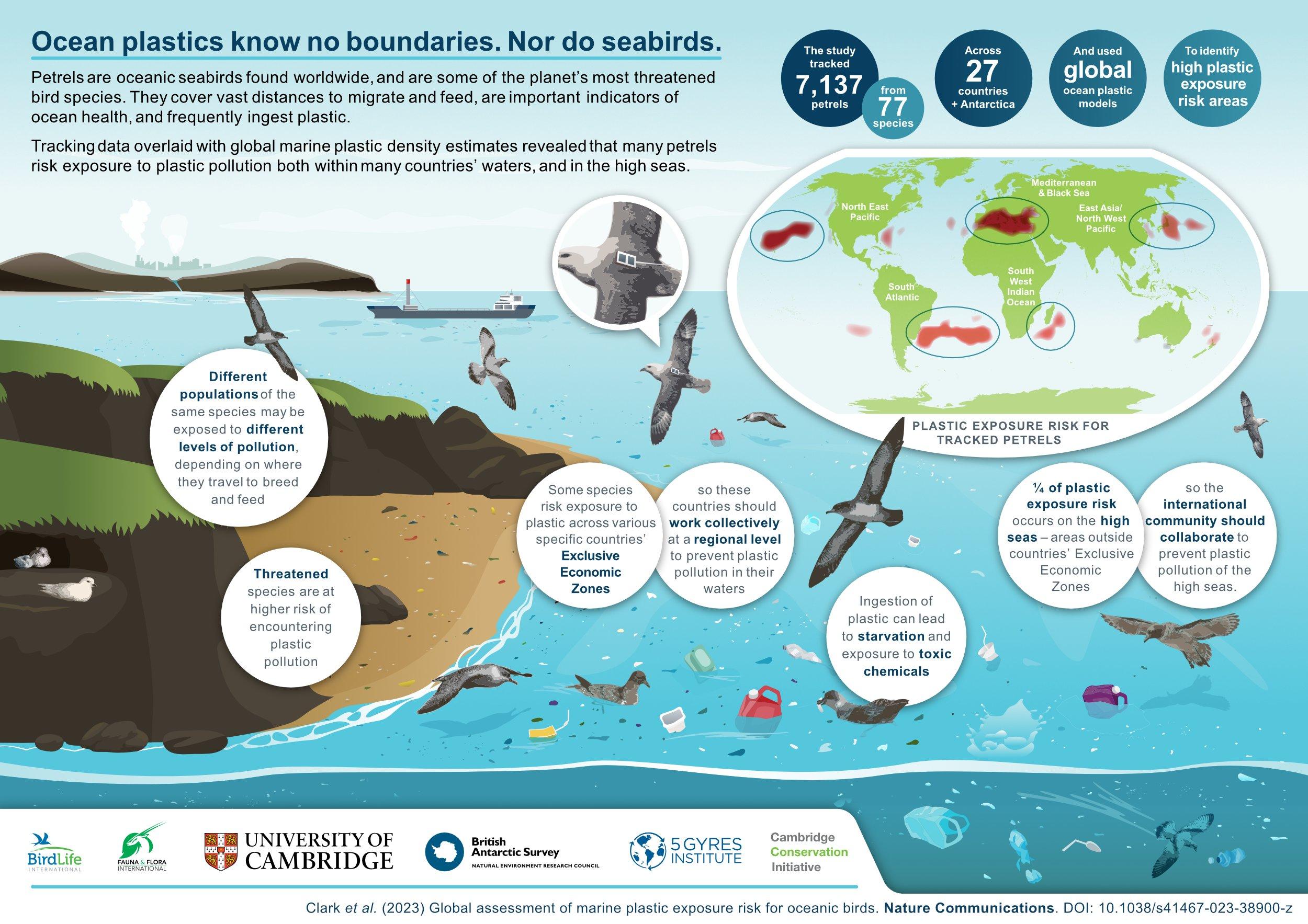
Submitted by Michela Leonardi on Wed, 05/07/2023 - 12:45
Lizzie and Andrea just published in Nature Communications a new paper assessing the risk of exposure to marine plastic for oceanic birds worldwide. The article has received a lot of media coverage (see altmetric), you can read here the press release of the University of Cambridge.
Bethany L Clark, Ana P B Carneiro, Elizabeth J Pearmain, Marie-Morgane Rouyer, Thomas A Clay, Win Cowger, Richard A Phillips, Andrea Manica et al. (2023)
Global assessment of marine plastic exposure risk for oceanic birds
Nat Commun. 2023 Jul 4;14(1):3665.
Abstract
Plastic pollution is distributed patchily around the world's oceans. Likewise, marine organisms that are vulnerable to plastic ingestion or entanglement have uneven distributions. Understanding where wildlife encounters plastic is crucial for targeting research and mitigation. Oceanic seabirds, particularly petrels, frequently ingest plastic, are highly threatened, and cover vast distances during foraging and migration. However, the spatial overlap between petrels and plastics is poorly understood. Here we combine marine plastic density estimates with individual movement data for 7137 birds of 77 petrel species to estimate relative exposure risk. We identify high exposure risk areas in the Mediterranean and Black seas, and the northeast Pacific, northwest Pacific, South Atlantic and southwest Indian oceans. Plastic exposure risk varies greatly among species and populations, and between breeding and non-breeding seasons. Exposure risk is disproportionately high for Threatened species. Outside the Mediterranean and Black seas, exposure risk is highest in the high seas and Exclusive Economic Zones (EEZs) of the USA, Japan, and the UK. Birds generally had higher plastic exposure risk outside the EEZ of the country where they breed. We identify conservation and research priorities, and highlight that international collaboration is key to addressing the impacts of marine plastic on wide-ranging species.
